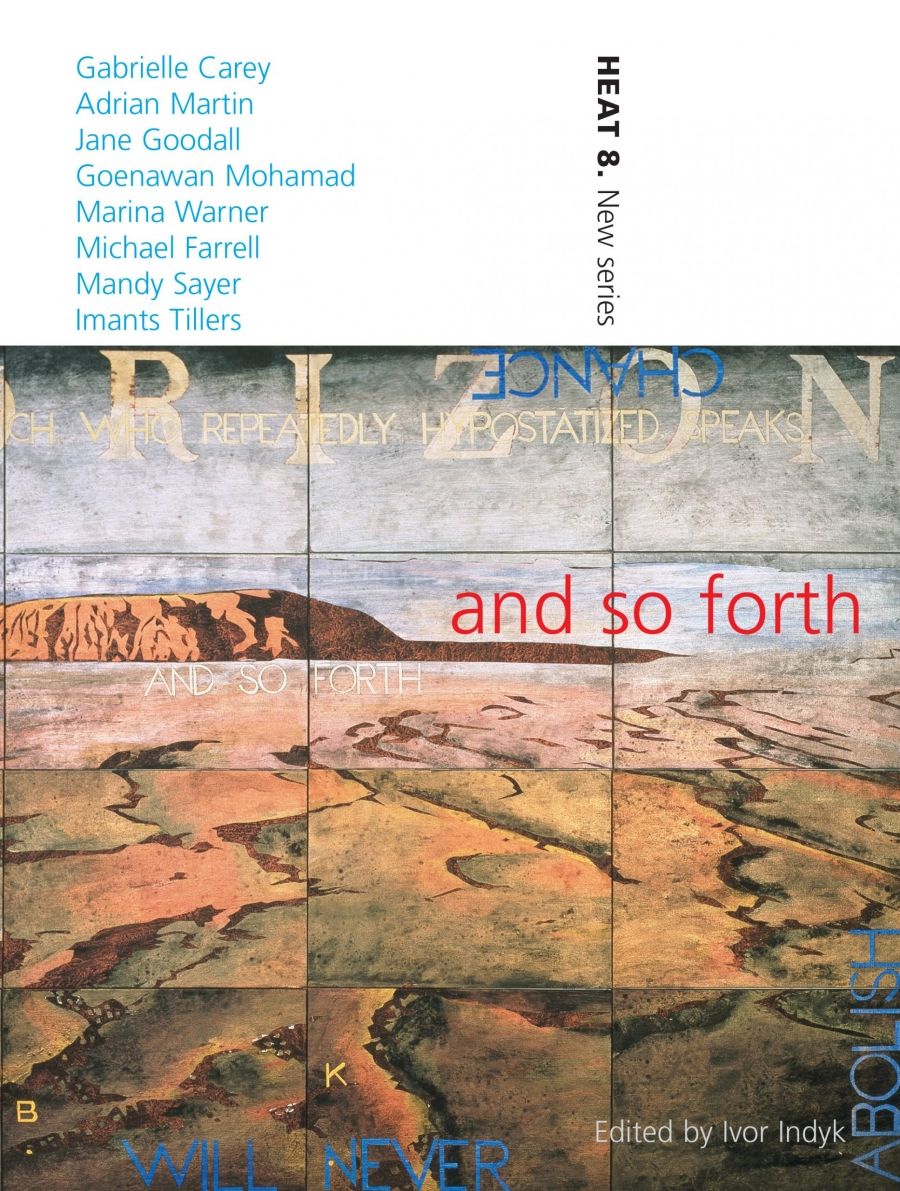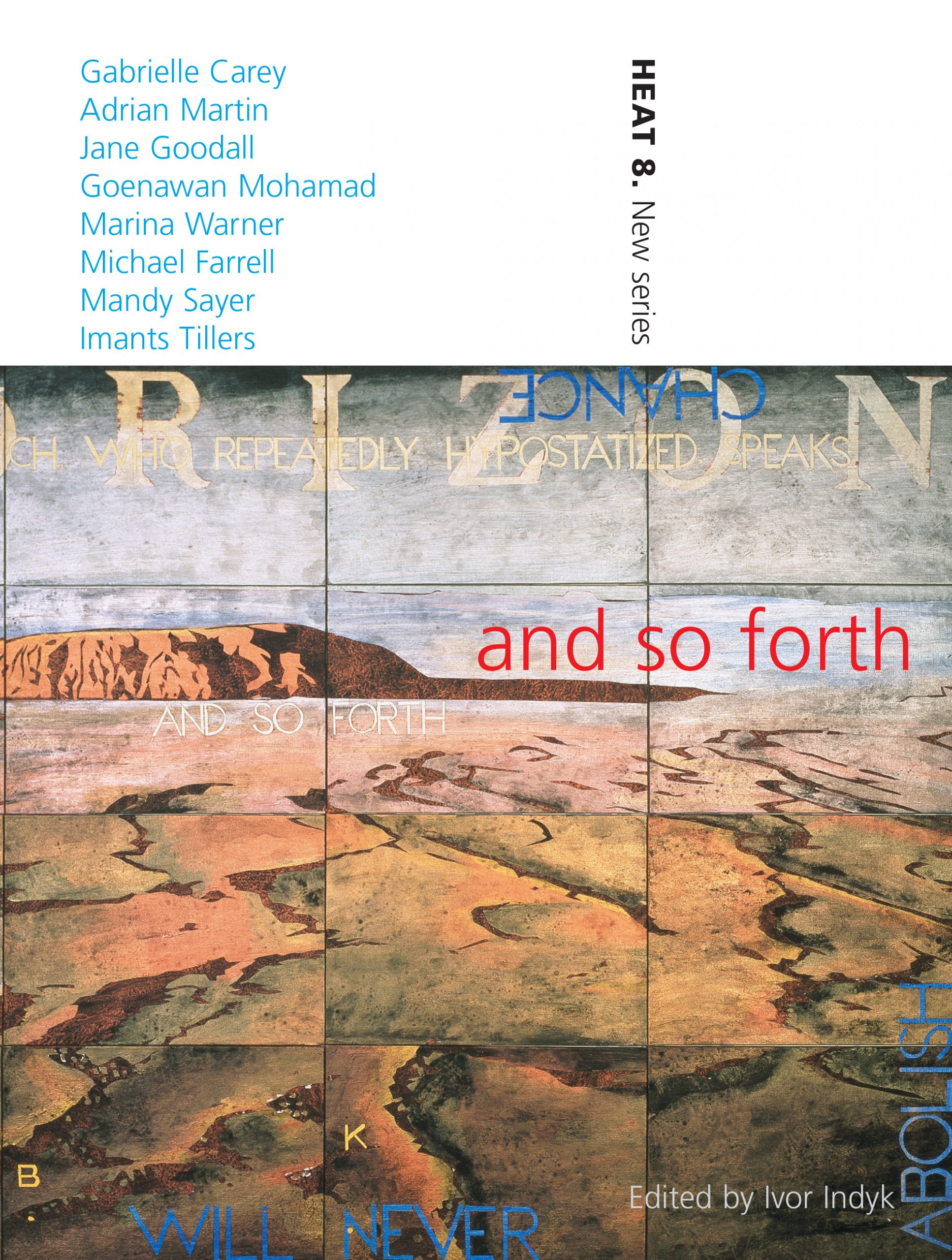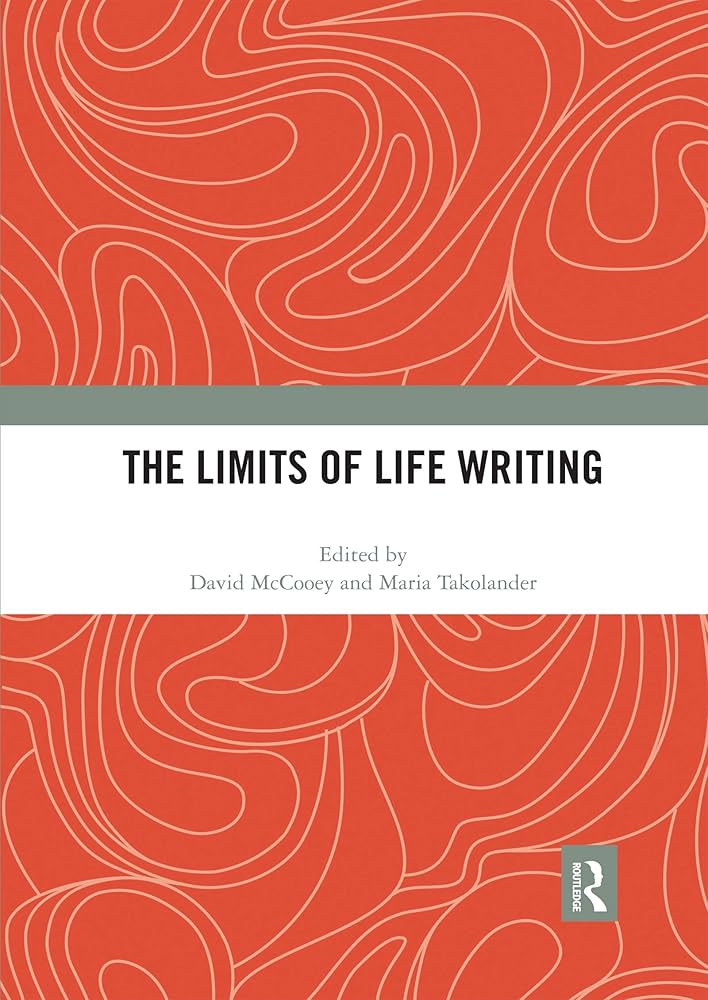
- Free Article: No
- Contents Category: Literary Studies
- Review Article: Yes
- Article Title: Ambulance Brigade
- Online Only: No
- Custom Highlight Text:
As the late Susan Sontag noted, interpretation tends to fall into two opposing camps. The first kind, ‘aggressive and impious’, treats works of art as landscapes concealing mineral ore: it ‘excavates, and as it excavates, destroys’. The other, by contrast, resembles less the pit-worker than the more distractible traveller who, so thrilled by the picturesque surrounds, decides to remain awhile: it ‘see[s] more, to hear more, to feel more’. These critical tendencies are still at war, forty years on. In a nutshell, this is the contestation between academic and journalistic writing. Australia’s interdisciplinary periodicals are the ambulances – and the ambulance-chasers – scrambling back and forth across its frontline.
- Book 1 Title: Heat 8
- Book 1 Subtitle: And So Forth
- Book 1 Biblio: $24.95pb, 255pp
- Book 1 Cover Small (400 x 600):

- Book 1 Cover (800 x 1200):

- Book 2 Title: Life Writing Vol. 1 No. 2
- Book 2 Biblio: $25pb, 227pp
- Book 2 Cover Small (400 x 600):

- Book 2 Cover (800 x 1200):

- Book 3 Title: Traffic No. 5
- Book 3 Subtitle: A Vision Splendid
In the same way, it is tempting to read the title of HEAT’s first issue published outside the academy, ‘And So Forth’, as an imperative statement – an affirmation of its independence. What is wonderful about HEAT is that it seems to set rather than follow its own course. It tacks in and out of topical matters, to be sure, but always in the manner of the bon vivant, not the zealot.
‘And So Forth’ also accurately reflects the thematic trajectory of the issue. Like the Weintraub Syncopators – whose engrossing story of accidental migration to Australia is told by Margaret Kartomi, John Whiteoak and Kay Dreyfus in the second article – nearly all of the fiction, non-fiction, poetry and works of art contemplate journeys away from home. Excursions long and short, real and imagined, and of a wide variety of complexions and intentions, are considered.
I enjoyed Josiane Behmoiras’s story ‘In the Wild,’ in which the unexpected sight of a fox on a busy Melbourne intersection prompts a Proustian-style reverie about a mad dash from Tel Aviv to a Galilee village on Yom Kippur in 1978. I found myself glancing more than once at Javant Biarujia’s meditations upon the possibilities for voyeurism in a Gare de Lyon waiting room. And I guffawed reading Joanne Burns’s poem about a visit to a touring old masters exhibition, during which she imagines what I can only think must be Hans Holbein the Younger’s illusionistic skull nicking off for some ice cream.
HEAT’s best contributions this time around are by writers who remain sensitive to the task of evoking place itself in the face of their own displacement. Antigone Kefala’s ‘Travel Journal’ is impressionistic and immediate, thanks to the cablese manner of the telling. But in the end, her meditations rouse the imagination little more than the scribblings in one’s own old notebooks. Gabrielle Carey’s ‘Mexican Masks’ succeeds where Kefala fails precisely because it patiently and dispassionately picks the bones of pure feeling. It is frank and personal without degenerating into the psychological striptease of a tale of self-discovery. Carey’s presence in the narrative simply ensures the intellectual honesty of the tale. Refreshingly, this traveller doesn’t pretend to leave.
Veracruz enriched or unscathed. For me, this is the stand-out piece in the issue.
The biannual Life Writing is a relative newcomer to the Australian periodical scene. As its name suggests, the journal’s subject is (auto)biographical narratives in the broadest possible sense. In this issue alone, memoirs, diaries, blogs, ‘faction’, travel writing, oral testimonies and obituaries are considered.
That Life Writing is at pains to prove its relevance to the real world and to real people is patently clear. As David McCooey argues convincingly in his editorial, the appeal of life narratives is widespread. The sales of political memoirs, biographical histories, sporting hagiographies and personal essays easily outstrip those of new and back-listed fiction. Meanwhile, the academic interest in ‘alterity, self-expression and subjectivity’, as McCooey puts it, continues to grow from strength to strength. We are, across the board, a society addicted to celebrity or hungry for intimacy, depending upon your point of view. There is more than enough cause for a journal to wonder why.
The problem is that Life Writing doesn’t appear to have really settled the question of its intended audience. McCooey makes the point that the (auto)biographical mode is premised upon ‘the communicable nature of experience’. However, the majority of the contributors to the current issue of the journal don’t appear to be in as egalitarian a mood. It is a dilemma facing all cultural studies academics, spelled out for us by James Ley in his review of three other journals, in the December 2004–January 2005 issue of ABR. Should the study of popular literary forms be a public performance, or does serious attention necessitate specialist writing?
McCooey and Life Writing’s general editors, Mary Besemeres and Maureen Perkins, are aware of the inherent contradictions of their project, and do their level best to straddle the two modes. Apart from the sizeable ‘Reviews’ section, which attends to blockbuster memoirs such as Stan Grant’s The Tears of Strangers, alongside academic press publications (in this case, Besemeres’s Translating One’s Self, a garish piece of self-promotion), the issue is split into two main parts. The ‘Articles’ section deals with non-fiction commentary on life writing, and the ‘Reflections’ section is set aside for theoretically informed life writing itself, which is a fifth of the size. While actual autobiography can hardly be seen as the journal’s raison d’être, Maria Takolander’s fine-spun ‘Swampland: Signs and Visitations’ did give me ample reason to be grateful that the ‘Reflections’ section exists at all.
While the overall tenor of the journal is that of the academic specialist, it remains readable. John McLaren’s exposé of the ‘real’ Alan Marshall, and Laurie McNeill’s study of Canadian death notices, deserve special mention in this regard. McCooey has done an excellent job editing the issue. Each piece speaks to the theme of life writing and the public sphere without necessarily marching to the beat of the same drum. A case in point is the way Michael Jacklin’s disquiet over what he calls the ‘critical enthusiasm for identifying harm’ in collaborative Aboriginal life writing compli-cates and contests the arguments of Kay Schaffer and Sidonie Smith in their article about the misuses of personal storytelling in human rights campaigning. Life Writing is full of earnest, significant scholarship. No need for ambulances here.
If there’s a group of writers who do deserve a helping hand these days, it’s postgraduates. They’re mere pups when they’re told by their Alma Maters that they must ‘publish or perish’. To make matters worse, few journals are ready-made for the purpose. Postgraduates don’t simply locate a forum for their ideas and go from there; they often have to start from scratch and forge one themselves.
Traffic is as professional-looking a postgraduate journal as I have ever seen. I have no doubt that the credit goes to the student editorial committees, past and present. That said, Traffic clearly has some money behind it: what periodical can boast a $1000 prize for the best published article each issue? Clearly, the University of Melbourne has cottoned on to the fact that its postgraduates are flag-bearers, too, and many of the contributions reward the university’s good faith. Traffic is about as interdisciplinary as it gets: read straight through from cover to cover, the issue’s theme, ‘A Vision Splendid’, doesn’t really stop it looking piebald. It was surprising to see the themes of migrancy, religion and space returned to again and again. I did note a handful of glaring sub-editorial errors: I admit to being distressed seeing a quotation by Conrad’s meditative seaman attributed to Chandler’s more taciturn dick. But Traffic is doing an excellent job of ferrying young researchers to the relative safety of a refereed article.


Comments powered by CComment